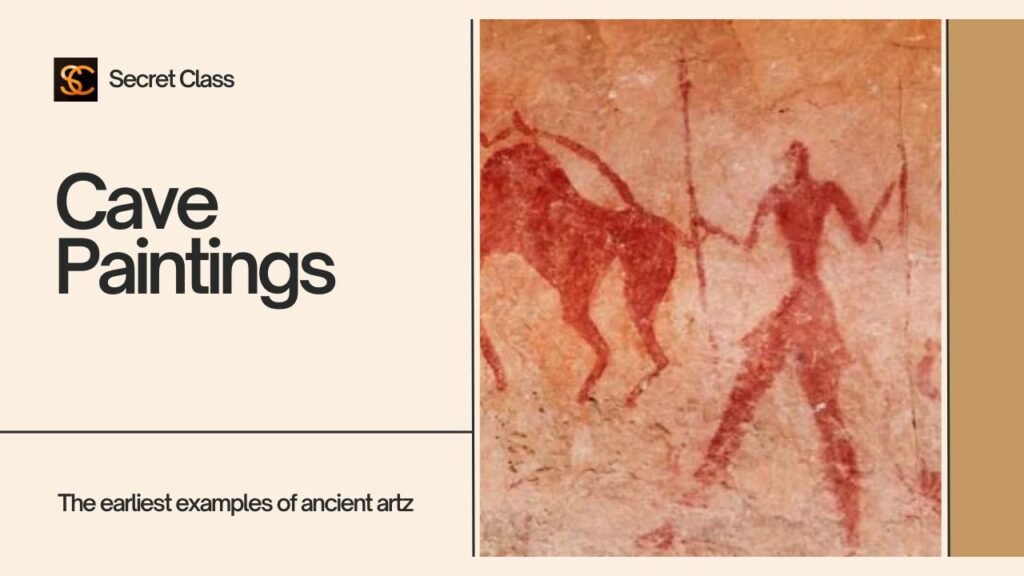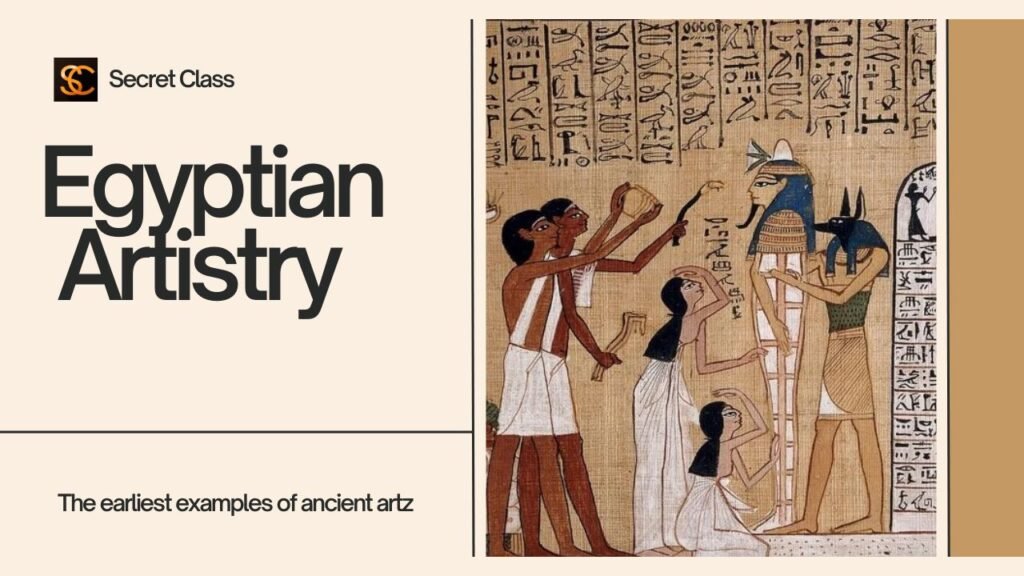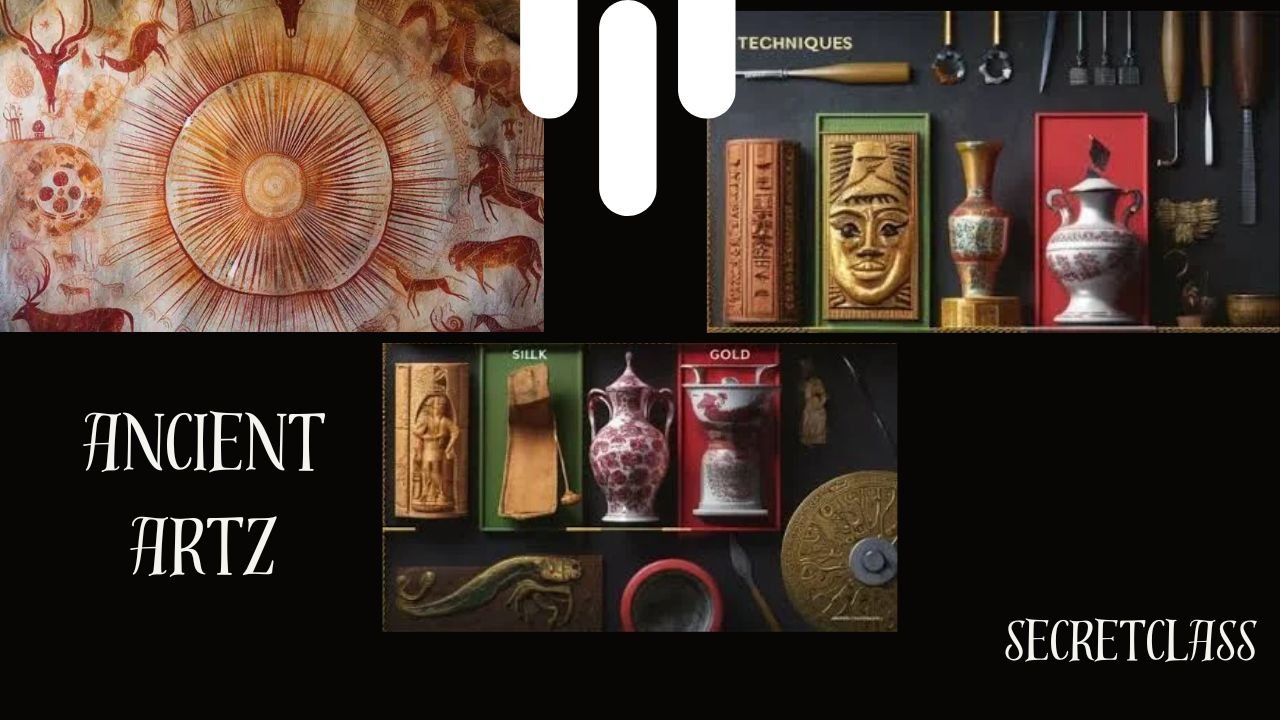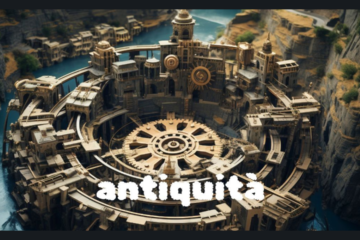Introduction
Ancient artz is more than just stone carvings, painted murals, or metal sculptures—it’s a glimpse into the distant past, revealing the lives, beliefs, and aspirations of long-gone civilizations. From the meticulous craftsmanship of the Egyptians to the striking murals of the Mayans, ancient artz has not only shaped human history but also continues to influence contemporary art. What makes ancient artz so fascinating? What stories do these ancient masterpieces tell, and how have they impacted the modern creative world? In this article, we’ll journey through the rich and diverse history of ancient artz, uncovering the treasures left behind by some of history’s most influential cultures.
Table of Contents
The Origins of Ancient artz
The origins of ancient artz stretch back to the dawn of human history. Early humans, driven by the need for self-expression, left their marks on cave walls, creating symbolic carvings from stone and bone. These primitive yet profound works mark the beginning of artistic symbolism and abstraction.
Key milestones in early art history include:
- Cave paintings (c. 40,000 BCE)
- Venus figurines (c. 35,000-40,000 BCE)
- Megalithic structures (c. 3000 BCE)
The Chauvet Cave in France, with its astonishing animal depictions dating to 30,000 BCE, shows the visual sophistication of our Paleolithic ancestors. These artists not only depicted what they saw but also infused their work with emotion, paving the way for artistic expression.
Additionally, the discovery of figurines like the Venus of Willendorf suggests that early humans created art for both personal and communal reasons. These sculptures, often emphasizing female forms, may have served as fertility symbols or representations of divinity.
As humans transitioned from nomadic lifestyles to settled agricultural communities, their art evolved. Megalithic structures like Stonehenge in England and Göbekli Tepe in Turkey reveal how early people used massive stones to create spiritual spaces. These structures reflect the growing importance of art and architecture in ancient societies.
Updated Information on Contemporary Perspectives on Ancient Artz
As we delve deeper into the significance of ancient artz, it’s essential to consider how contemporary perspectives are reshaping our understanding of these masterpieces. Modern scholars and artists increasingly emphasize the importance of cultural context, challenging traditional narratives that often overlook the diversity of experiences within ancient civilizations.
The Significance of Ancient artz
Ancient artz plays a critical role in helping us understand the evolution of human civilization. Artistic creations provide valuable insights into the social structures, religious beliefs, and daily lives of the people who made them. Historians, archaeologists, and art enthusiasts use ancient artz to piece together the cultural and historical fabric of different societies. More than just decorative, these works serve as visual records that convey the values and practices of past civilizations.
For instance, ancient Egyptian art is renowned for its adherence to established artistic conventions. Every portrayal of gods, pharaohs, and everyday life had dual purposes: enhancing the beauty of tombs and serving religious or funerary functions. Each artwork was imbued with deep spiritual significance.
Diverse Mediums in Ancient artz
The materials and techniques used in creating ancient artz were as varied as the cultures themselves. Geographic availability and technological advancements influenced the mediums chosen. Here are some notable mediums and techniques in ancient artz:
1. Cave Paintings

The earliest examples of ancient artz can be traced to the Upper Paleolithic era. Cave paintings, discovered in regions such as France, Spain, and Indonesia, depict animals, human figures, and abstract symbols. These works demonstrate a strong connection between early humans and their environment, as well as their desire to document it.
2. Sculpture
From the massive stone heads of the Olmec civilization to the refined marble statues of ancient Greece, sculpture has always played a central role in ancient artz. Sculptors used materials like stone, bronze, and clay to create lifelike figures and monumental works that celebrated deities, leaders, and historical events.
3. Mosaics and Pottery
Mosaics and pottery provided both aesthetic and practical value. In ancient Rome, mosaics made from colored tiles adorned homes and public buildings. Pottery, often decorated with intricate designs, offered a glimpse into the trade, culture, and social customs of the time.
4. Textiles
Although textiles are less durable than other mediums, they offer equally significant insights. Ancient textiles, such as those found in Egyptian tombs, demonstrate sophisticated weaving and dyeing techniques. These fabrics reveal much about ancient domestic life and technological advancements.
Mesopotamian Art: The Birthplace of Civilization
Mesopotamia, known as the “Cradle of Civilization,” is home to some of the earliest examples of structured society and artistic expression. Mesopotamian art was both functional and symbolic, with works often crafted to honor gods, rulers, and the mysteries of life.
1. Sculptures and Temples
Mesopotamian sculptures often depicted gods, kings, and mythological scenes. The intricate carvings and statues beautified temples like ziggurats and served to legitimize the authority of rulers.
ancient artz Across Cultures
As civilizations developed, so did their artistic traditions. Each culture’s unique style reflected its values, beliefs, and societal structure. Let’s explore a few key examples:
1. Egyptian Artistry

Ancient Egyptian art left behind monumental legacies such as the Great Pyramids of Giza and the Sphinx. Egyptian art was deeply intertwined with religious beliefs and the concept of eternal life. Their art adhered to strict conventions, using hierarchical scale (where more important figures appear larger) and composite views (showing faces in profile while displaying shoulders frontally). This stylized approach created a highly recognizable and captivating visual tradition.
Egyptian relief sculptures, often carved on temple walls, depicted daily life, religious rituals, and the deceased’s journey to the afterlife. The Book of the Dead, a collection of spells and instructions for navigating the afterlife, beautifully merges text and imagery.
2. Greek and Roman Art

Greek and Roman art greatly influenced Western culture. Greek sculptors achieved lifelike representations of the human body, while Roman art was more focused on realism and public works. Temples, frescoes, and statues celebrated gods, heroes, and important historical events.
Greek and Roman Influence on Ancient artz
Greek and Roman classical art set standards that shaped Western aesthetics for centuries. Renowned for their focus on beauty, balance, and proportion, these civilizations created timeless masterpieces that still inspire today’s art world. For example, the iconic sculpture Venus de Milo represents the Greek ideal of physical perfection, reflecting their belief that beauty mirrored divine harmony.
Greek art evolved from the stiff and symmetrical forms of the Archaic period into more lifelike and dynamic styles during the Classical and Hellenistic eras. This transformation reflected a growing emphasis on human potential, individuality, and achievement. Some key developments in ancient Greek artz include:
- Contrapposto: a standing pose that gives sculptures a more natural, relaxed appearance.
- Drapery techniques: which suggested the human form beneath the clothing.
- Realistic portraiture: showing increasing attention to individual characteristics.
Roman art, while heavily influenced by Greek traditions, developed its own distinctive style. Roman artists excelled in realistic portraiture, capturing individual personalities in detailed busts. In addition, they pioneered new architectural forms, including the arch and dome, as seen in monumental structures like the Pantheon. The Roman contributions to ancient artz were monumental, leaving a lasting legacy in architecture, sculpture, and painting.
Asian Contributions to Ancient artz
Across Asia, different civilizations contributed to the vast expanse of ancient artz. Ancient Chinese, Indian, and Japanese cultures each had their own distinct traditions that focused on spirituality, craftsmanship, and the human experience.
In China, ancient artz spanned over 5,000 years, showcasing exquisite bronzes, ceramics, and jade works. The Shang and Zhou dynasties, known for their bronze vessels, reflected the Chinese reverence for ancestral rituals. The famous Terracotta Army of Emperor Qin Shi Huang during the Han Dynasty demonstrated the mastery of sculpture and their belief in life after death.
Indian art flourished with religious and philosophical themes. Temple carvings and cave paintings, such as those found at Khajuraho and Ajanta, expressed the deep connection between the divine and human realms. Intricate carvings and complex iconography used in Indian artz convey spiritual truths through detailed, symbolic representations.
Japanese art, deeply rooted in Shinto and Buddhist influences, developed a minimalist aesthetic that focused on simplicity and natural beauty. Wabi-sabi, the appreciation of imperfection and transience, is a core concept reflected in Japanese ancient artz, from asymmetrical pottery to tranquil ink paintings.
Pre-Columbian American Artz
The ancient civilizations of the Americas contributed rich and diverse traditions to the world of art. The Mayan, Aztec, and Incan civilizations created art that served both practical and symbolic purposes, blending craftsmanship with spiritual significance.
Mayan art is famous for its glyphs (writing system) and stone carvings that commemorate significant events. Intricate jade jewelry and vibrantly painted ceramics also demonstrated the Mayan artists’ extraordinary skill. The Aztecs excelled in creating monumental stone carvings, such as the famous Sun Stone, which depicted their cosmology and understanding of time.
The Incan civilization is known for its engineering brilliance, reflected in their stonework without mortar, as seen at Machu Picchu. Incan textiles, with vivid colors and complex geometric designs, were not only practical but carried significant symbolic meaning, playing a central role in their society.
Key Themes in Ancient artz
Ancient artz reflects the cultural values, beliefs, and practices of different societies. Some prominent themes include:
- Religious and Spiritual Beliefs
Religion played a dominant role in many ancient artz traditions. Works of art were often used to honor deities, commemorate rituals, and offer spiritual protection. Greek and Roman mythology, for instance, frequently depicted gods and their interactions with mortals, showcasing the divine’s influence over human affairs. - Socio-Political Power
Art was a key tool in asserting political authority. In Egypt, the depiction of pharaohs as larger-than-life figures reinforced their divine status. Similarly, Roman emperors commissioned grand sculptures and monuments to celebrate their military conquests and political achievements, solidifying their power. - Daily Life and Environment
Ancient artz often depicted scenes from everyday life, capturing how people lived, worked, and interacted with their surroundings. In many cultures, artwork illustrated hunting, farming, and domestic activities, providing valuable insight into daily life and cultural values. - Human Relationships
From familial bonds to social hierarchies, human relationships were a common theme in ancient artz. Artists depicted scenes of love, war, and collaboration, offering a glimpse into the emotional and social dynamics of ancient societies.
Egyptian Ancient Artz
Egyptian artz combined artistic mastery with writing. The hieroglyphic system, used for both communication and decoration, was an integral part of Egyptian culture. These intricate symbols often depicted gods, animals, and everyday life, turning their language into a visual art form.
Pharaohs played a central role in Egyptian artz, with statues, murals, and jewelry created to honor them and emphasize their god-like status. Much of Egyptian art served a spiritual purpose, particularly the paintings and artifacts found in royal tombs. Tomb art was designed to guide souls through the afterlife, and every detail carried profound spiritual significance.
Enduring Influence of Ancient artz
The influence of ancient artz on modern culture is undeniable. From inspiring contemporary artists to influencing architecture, film, and fashion, ancient techniques and themes continue to resonate today. Art history, archaeology, and anthropology courses often explore these works, illustrating their cultural significance.
Museums and galleries worldwide feature ancient artz exhibitions, captivating audiences with their historical importance and beauty. Beyond the academic world, ancient artz also impacts popular culture, with films and literature often drawing from the legends, mythology, and aesthetics of ancient civilizations.
The lasting impact of ancient artz serves as a reminder that creativity and human expression have transcended time, shaping not only the past but also the present and future.
Roman Art: The Bridge Between Old and New
Mosaic Masterpieces
The Romans, heavily influenced by Greek traditions, innovated and expanded the boundaries of art, one of their significant contributions being mosaic art. Using tiny glass and stone pieces, they crafted vibrant depictions of gods, landscapes, and historical moments. These intricate mosaics were used to adorn floors and walls, showcasing the skill and creativity that set ancient artz apart.
Public Monuments and Statues
Rome was home to a vast collection of public monuments and statues, symbolizing the empire’s grandeur and accomplishments. Massive statues of emperors and triumphal arches celebrating military victories were visual reminders of Roman dominance and influence. These examples of ancient artz served both as a reflection of the empire’s power and as enduring symbols of their achievements in architecture and sculpture.
Preservation and Legacy
The preservation of ancient artz is vital for understanding our shared heritage. Museums and archaeological sites worldwide strive to protect these invaluable artifacts. Modern technology plays a crucial role in this process, with innovations like digital scanning, 3D printing, and virtual reality. These tools allow for the study, replication, and even immersive experiences of ancient artz, offering a glimpse into its past glory.
Conservation Challenges
Conserving ancient artzworks poses several challenges due to the fragility of many materials. Exposure to light, humidity, and pollutants can damage these delicate pieces over time. Stone sculptures face the risk of erosion or vandalism, while textiles and paintings may fade. Conservation experts employ advanced methods to protect these treasures, including climate-controlled environments, non-invasive imaging techniques, and meticulous cleaning and stabilization efforts. The digital documentation of ancient artz also creates a permanent record for future generations.
Ethical Considerations in Art Conservation
The preservation of ancient artzifacts raises important ethical debates, particularly when considering the origins and rightful ownership of some pieces. Many artifacts were removed from their original settings during periods of colonization, sparking ongoing debates about repatriation. The famous case of the Parthenon Marbles, housed in the British Museum, brings attention to this issue.
The Parthenon Marbles Controversy
The debate surrounding the Parthenon Marbles emphasizes the complex issues around the ownership and display of ancient artz. Those advocating for the marbles to remain in the British Museum argue that the museum provides a global platform for viewing and preserving these historical treasures. Conversely, supporters of returning the marbles to Greece emphasize the cultural and historical significance of these artifacts to their homeland, arguing they should be reunited with the Parthenon.
Religious Influence on Ancient artz
Religion played a pivotal role in the creation of ancient artz across civilizations. Massive temples, shrines, and sculptures were designed as both places of worship and symbols of divine authority. In Mesopotamia, Egypt, Greece, and Rome, religious structures were at the heart of artistic creation, portraying the power of gods and goddesses through grand, often sacred, art.
Sacred Symbols and Deities in ancient artz
Ancient artzists frequently used sacred symbols and deity depictions to convey religious stories and beliefs. For example, in Hinduism, deities were often immortalized in intricate stone carvings, while in ancient Greece, lifelike sculptures of the gods adorned temples. These sacred representations are key elements of ancient artz, reflecting the spiritual beliefs and values of early societies.
How Ancient artz Reflects Society
Art as a Historical Record
In ancient cultures, art was not merely for decoration—it was a tool for storytelling and historical documentation. From heroic battles to mythological tales, these artworks allowed civilizations to visually record their narratives, preserving the values, struggles, and victories of their people.
Social Status and Art
Art also represented social status in many ancient societies. The wealthiest individuals commissioned grand works, from monumental statues to elaborate paintings, showcasing their authority and power. ancient artz often celebrated rulers and nobility, as seen in Egyptian tomb paintings, which frequently depicted pharaohs in majestic poses.
Preservation and Study of Ancient artz
Archaeological Discoveries
Many pieces of ancient artz were hidden for centuries before being discovered by archaeologists. Excavations in places like Egypt, Greece, and China have unearthed incredible artistic treasures, revealing the rich cultural histories of these regions. Each new discovery adds to our understanding of the ancient world.
Modern Conservation Techniques
Advanced techniques in art conservation are helping to preserve ancient artz for future generations. Digital imaging, 3D scanning, and laser cleaning are just some of the methods used to restore and protect ancient sculptures, paintings, and artifacts. These innovations ensure that these masterpieces can be studied, admired, and appreciated for years to come.
The Enduring Influence of Ancient artz
Inspiration for Modern Artists
The legacy of ancient artz continues to inspire modern artists across various movements. From the Renaissance to contemporary art, ancient Greek and Roman sculptures, Mesopotamian pottery, and Egyptian tomb paintings have left a lasting imprint on artistic creativity and expression.
Cross-Cultural Influence
The impact of ancient artz extended far beyond its origins, shaping not only local traditions but also inspiring cross-cultural exchanges. For instance, Hellenistic art spread across regions influenced by Alexander the Great, bringing Greek aesthetics to places as far as India. Trade routes like the Silk Road facilitated the exchange of artistic styles between the East and West, showcasing the global reach of ancient artz.
Conclusion: The Timeless Importance of Ancient artz
ancient artz provides us with a profound connection to the past. These works reveal the interplay between religion, society, and identity, offering lessons that transcend time. From the pyramids of Egypt to the intricate Greek sculptures, the creativity and resilience embedded in ancient artz continue to captivate us. By studying these ancient artzworks, we not only learn about the societies that created them but also gain a deeper appreciation for the enduring power of human expression.
FAQs about Ancient artz
Where can I see Ancient artz today?
Ancient artz can be viewed in museums, archaeological sites, and through online digital archives.
What is considered Ancient artz?
ancient artz refers to art created by early civilizations, from prehistoric times to the early medieval period.
Why is Ancient artz important?
Ancient artz provides insight into the beliefs, values, and everyday life of early societies, helping us understand human history and culture.
What are some famous examples of Ancient artz?
Some famous examples include the Pyramids of Giza, the Parthenon in Greece, the Terracotta Army of China, and Rome’s Colosseum.
How was Ancient artz preserved?
Ancient artz was preserved through natural processes, like burial or protection within tombs, and later through modern conservation efforts.
What materials were used in Ancient artz?
Materials like stone, clay, metal, wood, and natural pigments were commonly used in creating ancient artzworks.
How did religion influence Ancient artz?
Religion played a central role in ancient artz, with many works dedicated to gods, goddesses, and religious rituals.
What is the oldest form of Ancient artz?
Cave paintings, dating over 30,000 years old, are considered the oldest known examples of ancient artz.
How does Ancient artz influence modern art?
Ancient artz continues to inspire modern artists in sculpture, painting, and architecture.What is the difference between ancient and modern art?
Ancient artz often focused on religious, ceremonial, or practical themes, while modern art explores more abstract and conceptual ideas.
You can see latest news and updates at: Secret Class



